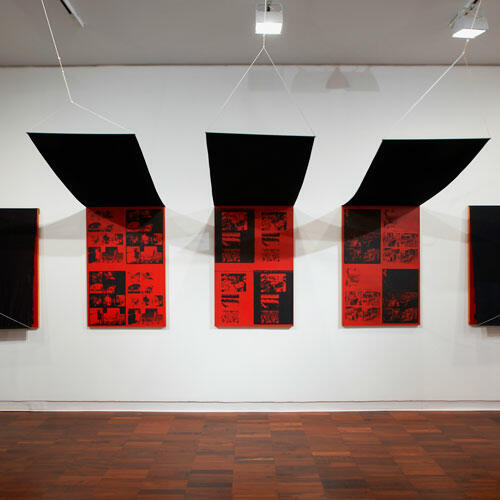Antonio Manuel
Americas Society, New York
From September 15 through December 10, visitors will have the chance to view the first solo exhibition in the United States of the Brazilian artist Antonio Manuel (b.1947, Portugal). The show focuses on Antonio Manuel’s preeminent role in the development of the groundbreaking neo-avant-garde movement that emerged in Rio de Janeiro during the 1960s. During the most repressive years of the Brazilian military dictatorship (1968-1974) Antonio Manuel’s artworks and actions were at the center of the debates concerning institutional censorship. During that time, the artist produced work that combines Neo-Concrete, Pop, and Conceptual art.

The title of the exhbition is inspired by Manuel Antonio’s first solo show presented in 1966 at Galeria de Goeldi, in Rio de Janeiro. On that occasion he exhibited a series of drawings on newsprint, which “constitute a statement of purpose,” according to art critic Ronaldo Brito. I Want to Act, Not to Represent. Stretching the boundaries of traditional media, Antonio Manuel was a pioneer of Body Art and of multidisciplinary artistic practices. He was also, together with so many other Brazilian artists and critics, an integral part of the debate concerning the Concrete and Neo-Concrete artistic movements.
I Want to Act, Not to Represent features drawings, films, installations and sculptures, as well as documentation on the artist’s performances. Delicate in form, the exhibition presents a selection of works in which the artist develops, through the utilization of the newspaper printing process, a dense visual language of his own in the content, for example, of some of the pieces such as As armas do dialogo, (1968) and Sorriso em vez de odio (1968), from the series Flan.
A centerpiece in the exhibit is the installation Repressão outra vez-eis a consequência, which consists of five black surfaces on which visitors must actively pull the strings to uncover the veiled images. Using the covers of the Sao Paulo newspaper Última hora, the reproduction of the violent clashes between policemen and students acquires a monumental scale in this work. Antonio Manuel’s work forces the passive viewer to take action through the act of observing and paying attention to the subject of the piece. The installation does not function, nor is it complete, without the action of the public aimed at discovering the news. This piece was at the center of the controversy, later to be censured on the occasion of its presentation in the Museum of Modern Art in Rio de Janeiro in 1969. I Want to Act, Not to Represent is an invaluable effort on the part of the curators, Claudia Calirman and Gabriela Rangel, to organize and introduce the emblematic oeuvre of an artist who works actively within an oppressive system.
-
 Installation view, of the “Flan” series. Vista de la instalación de la serie “Flan”. Photograph/Fotografía: Arturo Sánchez. Courtesy/Cortesía: Americas Society, New York.
Installation view, of the “Flan” series. Vista de la instalación de la serie “Flan”. Photograph/Fotografía: Arturo Sánchez. Courtesy/Cortesía: Americas Society, New York.




